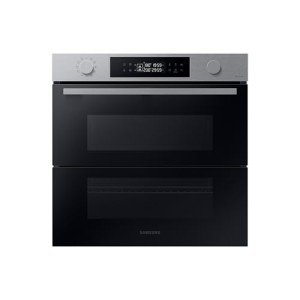The Rise of Built-In Ovens: A Seamless Approach to Modern Cooking
In modern kitchens, where design aesthetic appeals blend seamlessly with performance, one appliance stands apart as a true video game changer: the built-in oven. As house owners and chefs alike continue to look for ingenious solutions that enhance their cooking experience, built-in ovens have actually become progressively popular. This post checks out the benefits, considerations, and patterns surrounding built-in ovens, highlighting why they are a necessary feature in contemporary cooking spaces.
What is a Built-In Oven?
A built-in oven is a kitchen area home appliance created to be integrated into the kitchen cabinetry of a kitchen rather than standing alone. Unlike conventional freestanding ovens, which can be moved and positioned anywhere, built-in ovens can be found in numerous styles and sizes to fit particularly within designated areas. Readily available in single or double setups, these ovens use a streamlined look that complements modern-day cooking area styles.
Benefits of Built-In Ovens
1. best integrated ovens -Saving Design
One of the most enticing advantages of built-in ovens is their space-saving design. By integrating the oven into cabinets, you can maximize important counter and floor area. This is especially advantageous in smaller sized cooking areas, where making the most of space is necessary. Built-in ovens can be set up at eye level, making them more available and lowering the need to flex down.
2. Aesthetic Appeal
Built-in ovens add to a streamlined and cohesive kitchen style. Readily available in various surfaces-- such as stainless-steel, black, white, and custom-made cabinets-- they can mix perfectly into the total decoration. This visual appeal enhances the cooking area's visual consistency and raises the space, creating a modern and advanced environment.
3. Improved Functionality
Many built-in ovens come equipped with advanced cooking innovations, such as convection cooking, steam ovens, and smart features. These improvements permit versatile cooking choices, making it easier to accomplish professional-level outcomes in your home. Smart built-in ovens can even connect to Wi-Fi, enabling users to manage the oven remotely, get notifications, and gain access to a range of cooking programs and recipes.
4. Enhanced Ventilation
Since built-in ovens can be integrated with kitchen hoods and ventilation systems, they can assist maintain better air quality and lower cooking smells. This is particularly significant for those who like to cook with fragrant spices and active ingredients, as an effective ventilation system can keep the cooking area comfortable and inviting.
5. Personalization Options
Built-in ovens offer a large range of modification options to fit specific cooking designs and needs. From professional-grade home appliances with numerous cooking modes to compact styles for smaller kitchen areas, house owners can pick the oven that fits their specific requirements. Numerous makers also offer adjustable front panels, allowing you to match the oven's look to your kitchen cabinetry for a genuinely unified look.
Considerations When Choosing a Built-In Oven
While built-in ovens have numerous benefits, there are important considerations to keep in mind before purchasing:
1. Cost
Built-in ovens normally feature a higher price than their freestanding equivalents due to their style and setup requirements. It's important to consider both the expense of the oven and any extra expenses related to cabinets modifications or installation.
2. Setup Requirements
Setting up a built-in oven frequently needs expert assistance, particularly if you need to modify existing cabinetry. Ensure that you think about any costs connected with installation, consisting of labor and possible kitchen cabinetry modifications.
3. Size and Dimensions
Before buying a built-in oven, determine the designated area accurately to make sure a correct fit. Built-in ovens can be found in various sizes and setups, so choosing one that lines up with your requirements and cooking area style is vital.
4. Way of life and Usage
Consider your cooking practices and needs when picking a built-in oven. If you frequently host large events, a double oven might be more useful. On the other hand, if you have a compact cooking area, a single-wall oven may be adequate.
Patterns in Built-In Ovens
The kitchen area device market is continually developing, and built-in ovens are not exempt from emerging patterns. Some existing patterns include:
Smart Technology Integration: With the increase of clever home innovation, built-in ovens now typically feature connectivity options. This enables users to keep track of cooking development and change settings by means of mobile apps.
Energy Efficiency: As sustainability becomes a priority, lots of producers are buying energy-efficient built-in ovens that decrease energy usage while maintaining performance.
Multi-functional Designs: Built-in ovens now use functions such as air frying, sluggish cooking, and steaming, offering versatility that satisfies a large range of cooking techniques.

Conclusion
Built-in ovens undoubtedly represent a perfect blend of style, function, and convenience in today's kitchen areas. As more house owners go with this contemporary solution, the focus shifts to developing a cooking space that is as aesthetically pleasing as it is useful. Whether you are constructing a brand-new home or renovating your cooking area, considering a built-in oven might elevate your cooking experience and transform your kitchen area into a stylish and functional haven. With a selection of options offered and ongoing innovations in innovation, built-in ovens remain a standout choice for both novice cooks and culinary lovers alike.
